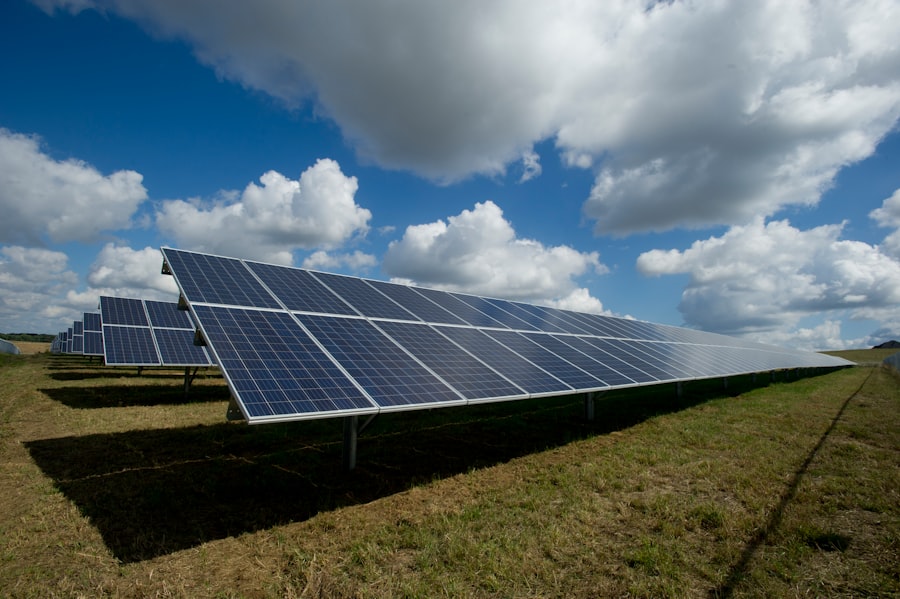In the realm of modern architecture, high-performance façade materials play a pivotal role in shaping not only the aesthetic appeal of a building but also its functionality and sustainability. These materials are engineered to meet specific performance criteria, including durability, energy efficiency, and environmental resilience. As a property owner or contractor, understanding the significance of these materials can greatly influence your design choices and ultimately the success of your project.
High-performance façades are designed to respond to various external factors, such as climate, location, and intended use of the building. They serve as the first line of defence against environmental elements, protecting the structure from moisture, wind, and temperature fluctuations. Moreover, these materials contribute to the overall energy efficiency of a building by minimising heat loss in winter and reducing heat gain in summer.
By selecting the right façade materials, you can enhance the longevity of your building while also ensuring compliance with local building regulations and sustainability standards.
Key Takeaways
- High-performance façade materials play a crucial role in building design by enhancing aesthetics, functionality, and sustainability.
- Energy efficiency is a key consideration in façade materials, as they can significantly impact a building’s overall energy consumption and environmental footprint.
- Weather and environmental factors can have a significant impact on the performance and durability of façade materials, making it important to select materials that can withstand these challenges.
- Insulation and thermal performance are essential aspects of high-performance façade materials, as they contribute to the overall energy efficiency and comfort of a building.
- The science of light and acoustic control in façade materials is important for creating comfortable and productive indoor environments, making it essential to consider these factors in building design.
The Importance of Energy Efficiency in Façade Materials
Thermal Performance Ratings: A Key Indicator
When selecting energy-efficient façade materials, it is essential to evaluate their thermal performance ratings. Materials with high R-values offer better insulation properties, significantly impacting heating and cooling demands. Additionally, incorporating reflective or absorptive coatings can further enhance energy efficiency by managing solar heat gain.
Long-term Benefits for Property Owners and Contractors
Investing in energy-efficient façade materials can lead to long-term savings and increased property value. By choosing sustainable façade materials, property owners and contractors can align with global sustainability goals and contribute to a more environmentally friendly future.
Achieving Sustainability through Façade Design
By prioritizing energy efficiency in façade design, architects and builders can create buildings that not only reduce their environmental impact but also provide a comfortable and healthy indoor environment for occupants.
Exploring the Impact of Weather and Environmental Factors on Façade Materials

The performance of façade materials is heavily influenced by weather and environmental conditions. Factors such as humidity, temperature fluctuations, UV exposure, and pollution can all affect the durability and longevity of façade systems. Understanding these impacts is crucial for making informed decisions about material selection and maintenance strategies.
For instance, in coastal areas where saltwater exposure is prevalent, choosing corrosion-resistant materials is essential to prevent degradation over time. Similarly, in regions with high UV radiation, selecting materials with UV-resistant properties can help maintain their appearance and structural integrity. As a contractor or property owner, it is vital to assess the specific environmental conditions of your project site and select façade materials that can withstand these challenges while ensuring optimal performance.
The Role of Insulation and Thermal Performance in High-Performance Façade Materials
Insulation is a fundamental aspect of high-performance façade materials that directly impacts a building’s thermal performance. Effective insulation not only enhances energy efficiency but also contributes to occupant comfort by maintaining stable indoor temperatures. When selecting façade materials, it is essential to consider their insulation properties and how they integrate with the overall building envelope.
High-performance façades often incorporate advanced insulation technologies, such as insulated panels or vacuum insulation systems, which provide superior thermal resistance compared to traditional materials. These innovations help reduce heat transfer through the building envelope, leading to lower energy consumption for heating and cooling. As a property owner or contractor, prioritising insulation in your façade design can result in significant energy savings and improved occupant satisfaction.
The Science of Light and Acoustic Control in Façade Materials
In addition to thermal performance, high-performance façade materials also play a crucial role in controlling light and sound within a building. The ability to manage natural light can enhance the aesthetic appeal of interior spaces while reducing reliance on artificial lighting. Similarly, effective acoustic control is essential for creating comfortable environments, particularly in urban settings where noise pollution is prevalent.
Façade materials can be designed with specific properties that optimise daylighting while minimising glare. For example, using glass with varying degrees of transparency or incorporating shading devices can help regulate light levels within a building. On the acoustic front, selecting materials with sound-absorbing properties can significantly reduce external noise intrusion.
As a contractor or property owner, understanding these aspects can help you create spaces that are not only visually appealing but also conducive to productivity and well-being.
Innovations in High-Performance Façade Materials for Sustainable Building Design

Innovations in Façade Technology
The field of façade engineering is continually evolving, with innovations emerging that enhance the sustainability and performance of building envelopes. From self-cleaning surfaces to integrated photovoltaic systems, these advancements are transforming how façades contribute to overall building performance. One notable innovation is the development of biophilic façade systems that incorporate living elements such as green walls or vertical gardens.
Benefits of High-Performance Façade Materials
These systems not only improve air quality but also provide natural insulation and aesthetic benefits. Additionally, advancements in smart façade technologies allow for dynamic responses to environmental conditions, optimising energy use throughout the day. As a property owner or contractor, staying informed about these innovations can help you make strategic decisions that align with sustainable building practices while enhancing the overall performance of your projects.
Importance of Façade Materials in Sustainable Architecture
In conclusion, high-performance façade materials are integral to modern building design, offering numerous benefits ranging from energy efficiency to enhanced occupant comfort. By understanding their role in addressing environmental challenges and embracing innovative solutions, you can make informed decisions that contribute to sustainable architecture. Whether you are a property owner looking to enhance your building’s performance or a contractor seeking to implement cutting-edge designs, prioritising high-performance façade materials will undoubtedly yield long-term advantages.
FAQs:
1. What are high-performance façade materials?
High-performance façade materials are specially engineered products designed to enhance a building’s durability, energy efficiency, and aesthetic appeal while providing protection against environmental factors.
2. How do façade materials impact energy efficiency?
Façade materials influence energy efficiency by improving thermal insulation and minimising air leakage, which reduces heating and cooling demands.
3. What should I consider when selecting façade materials for my project?
Consider factors such as local climate conditions, insulation properties, durability against environmental elements, and compliance with sustainability standards when selecting façade materials.
4. How do innovations in façade technology contribute to sustainability?
Innovations such as biophilic designs and smart technologies enhance sustainability by improving energy efficiency, air quality, and overall building performance while reducing environmental impact.
5. Can I improve my building’s acoustic performance with façade materials?
Yes, selecting façade materials with sound-absorbing properties can significantly reduce external noise intrusion and improve overall acoustic comfort within your building.
If you are interested in learning more about high-performance façade materials, you may want to check out the article “The Importance of Building Envelope Design in High-Performance Buildings” on www.facadespecialist.com. This article delves into the crucial role that building envelope design plays in creating energy-efficient and sustainable structures. By understanding the science behind high-performance façade materials and building envelope design, architects and designers can create buildings that not only look great but also perform exceptionally well in terms of energy efficiency and environmental impact.
